
Dynamics

|
Generational Dynamics |
| Forecasting America's Destiny ... and the World's | |
| HOME WEB LOG COUNTRY WIKI COMMENT FORUM DOWNLOADS ABOUT | |
 |
The dramatic photos that surfaced this week, photos that depict abuse of Iraqi prisoners, have thrown the Iraqi war into a political battle that's engulfing the American presidential campaign and the worldwide media. All of a sudden, it's as if America is back in the Vietnam war days, with wild protests and even hints that the American president is a war criminal.
Actually, if you look carefully, that's not what's happening at all. There are no protests, riots and demonstrations in America, except what you would normally expect in a presidential election battle.
With or without the photos, America today is very different from America in the 1960s. It's Iraq today that's similar to America in the 1960s.
There are gangs who bomb public buildings in the capital; student unrest, riots and demonstrations in cities throughout the country; assassinations of major figures; rhetoric calling government leaders criminals; radical figures calling for government overthrow, massive insurrections and civil war; media publicity sympathizing with the rioters rather than the government officials.
Sound familiar?
It should. It's happening in Iraq today, but it also happened in America in the 1960s and 70s.
That's no accident. It happens in every country, every society, throughout time and history, and always starting about 15-20 years after the end of a major crisis war.
At that time, college age kids who have no personal memory of the last crisis war start to "rebel" against their parents, their elders. It happened in America in the 1960s and 70s, following World War II, and it's happening today in Iraq, following the Iran-Iraq war of the 1980s.
We're going to be taking a trip back to America in the 1960s, but first let's look at the Iran-Iraq war of the 1980s.
It was a particularly murderous and genocidal war. More than 50% of the males of military age in Iraq were conscripted, yielding an army of 1.3-1.6 million men. There were some 400,000 casualties (and about 600,000 casualties in Iran).
So what's the effect on Iraq today? First, a large percentage of the men who would today be in their 40s and 50s are gone - dead. These men are survived by their wives, children, brothers, sisters, parents and friends, all of whom were traumatized in the 1980s by seeing all these men, these loved ones, killed all around them. Do you remember how traumatized America was after 9/11? Well, that happened day after day to Iraq in the 1980s.
The people of Iraq today still feel the emotional trauma they went through the 1980s. They don't want anything like that to happen again.
For over a year, pundits and high-priced analysts have been warning about and predicting a civil war in Iraq or an uprising against the Americans, as ridiculous and preposterous that whole idea is. Every Iraqi over 30 is reliving the horror of the Iran-Iraq war on a daily basis, and has no intention whatsoever going through that again, no matter the Americans do.
The same was true in America in the 1960s, some 20 years following World War II. Americans were equally traumatized by World War II, when they were so infuriated by the Germans and Japanese that they firebombed Dresden and dropped nuclear weapons on two Japanese cities.
What's happening today in Iraq is what happened in the 60s in America -- and it's what has happened in every society, in every nation throughout history, 20 or so years after a violent, genocidal crisis war. What happens is that the kids born after the war come of age. These kids have no personal memory of the war, and so have no memory of being traumatized by the war. As a result, they look at the world completely differently, resulting in rebellion, a "generation gap," a split between this generation and their parents' generation.
So now let's see what happened in 1960s America, and compare it to Iraq today.
Today we remember the 1960s as a time of anti-war protests, but in fact the protests began long before almost anyone had even heard of Vietnam.
The first massive riots and demonstrations began in 1963, and they were typically civil rights protests against racial discrimination.
In 1963, over 200,000 blacks marched in Detroit to protest discrimination and almost half of the children in Chicago boycotted their schools.
Each summer from then on was referred to in news reports as a "long hot summer," as blacks protested in one city after another, often with violence. The nation breathed a sigh of relief on Labor Day of each year, as the fall arrived, and with the hope that there would be no more violence for a while.
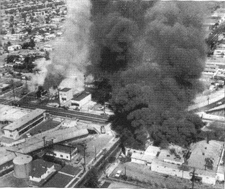 |
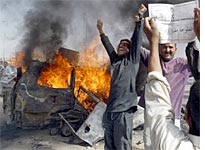 |
The biggest and most memorable riot occurred in 1965 in Watts, the black neighborhood of Los Angeles. It was pretty clearly generational, as young blacks rioted and destroyed large numbers of businesses and retail establishments in Watts, mostly run by older generation blacks. The riot lasted six days, leaving 34 dead and causing $40 million in property damage.
Rioting continued for several summers thereafter, but the worst summer of violence occurred in 1967, when racial unrest hit over 100 cities across the country, with the largest riots in Newark and Detroit.
Almost all the riots were sparked by police arrests, and were uncoordinated local riots. The major exception was the 1968 riots, which swept the U.S. following the assassination of Martin Luther King Jr.
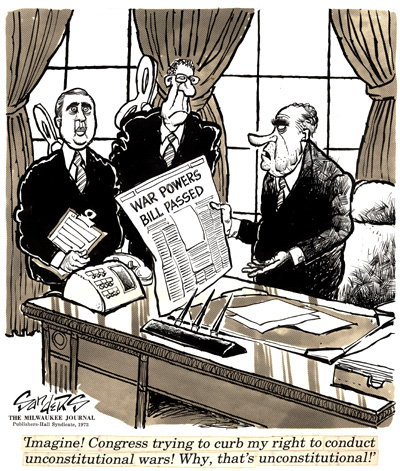 |
 |
They've been called "Bohemians" and "hippies." They sprout up in the youth culture of every awakening period. There was Paris in 1898, there was Greenwich Village in the 1920s and 60s, and there was the Haight-Ashbury district in San Francisco in the 1960s. They're characterized by unconventional dress and hair styles, use of illicit drugs and sexual nonconformity. In the 1960s they were frequently called "pot-smoking long-haired sex-crazed hippies."
By the mid-60s, the "hippie lifestyle" was being emulated by kids around the country. A lot of college kids let their hair grow, more out of laziness than anything else, much to the dismay of the barbers who were forced out of business. Rock became the official counter-culture music. Pot smoking became acceptable in some sub-cultures, and Harvard psychologist Professor Timothy Leary encouraged kids to take hallucinogenic LSD and to "Turn on, tune in, and drop out."
The first major college protests began in 1964 at the University of California at Berkeley over the issues of free speech and right of assembly. The college protests were generally non-violent at first, but the student movements turned into deadly seriousness by 1967, with the armed forces draft for the Vietnam War. Hundreds of thousands of college males chose to defy the draft, and in the 1968 Democratic National Convention in Chicago, over 10,000 college students led the antiwar protests that confronted 6,000 National Guard troops. There was widespread violence; policemen were attacked with rocks, and many students were clubbed. 668 students were arrested, and over a thousand were injured.
Student riots and demonstrations drew blood not only throughout America, but also in Canada and Europe. In Germany and France they were called the "68ers," and in France the violence was so extreme it almost brought down the government.
Although the civil rights protests and the student protests occurred in the same period and had mutual synergy, they were really two fairly distinct movements.
Within the civil rights movement itself there were dark forces and light forces.
|
Malcolm X was the dark force. In 1963 he became the first major "black separatist," in a speech where he demanded that the "wicked white race" pay "back pay" for 400 years of slave labor. This would consist of 1/7th of the terrority of the U.S. for a new black nation, and a substantial amount of money. "We want no part of integration with this wicked race of devils," he said, and hinted at violence. In another speech, just after the assassination of President Kennedy, he said, "White America is doomed! Death and devastating destruction hang at this very moment in the skies over America." In response to a question about the assassination, he said that Kennedy "never foresaw that the chickens would come home to roost so soon." These inflammatory remarks caused a split within Malcolm X's own black separatist organization, and in the intramural fighting, Malcolm X was murdered in 1965.
| ||||||
|
Reverend Martin Luther King Jr. was the opposite in almost every way. After attending theological school he became an ardent advocate for achieving racial equality through non-violent means. In August 1963, King led a march on Washington in which over 200,000 people participated. It was at that time that he told the crowd, "I have a dream that one day the nation will rise up and live out the true meaning of its creed ... all men are created equal." King won the Nobel Peace Prize in 1964 and continued as a tireless and idealistic civil rights leader. King was assassinated in 1968, but remains to this day as a symbol of racial equality through non-violent means.
| ||||||
Following the assassination of Malcolm X, his message was taken up by the Black Panthers, a group formed in 1966 by Huey P. Newton. Saying that "We have two evils to fight, capitalism and racism. We must destroy both racism and capitalism," Newton essentially advocated a civil war between blacks and whites by encouraging blacks to rise up against whites as a matter of self-defense. Polls showed that the goals and methods advocated by the Black Panthers received high levels of approval among blacks, but of course no uprising actually occurred.
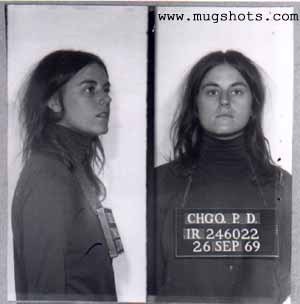 |
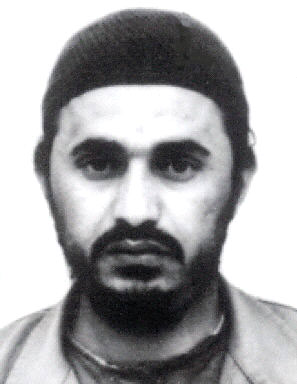 |
The Weathermen group was formed as a splinter group from the non-violent Students for a Democratic Society (SDS). The name comes from the Bob Dylan lyrics, "You don't need a weather man to know which way the wind blows." They advocated overthrow of the American government through a campaign of bombings, jailbreaks and riots. They began in October, 1969, with a bombing of a statue in Chicago during their first event, called the "Days of Rage." They followed this by leading a group of 300 in a riot through Chicago's business district, smashing windows and cars. Six people were shot in the ensuing violence. In 1970, following the assassination of Black Panther Fred Hampton by the FBI, the group changed its name to Weather Underground and issued a Declaration of War against the United States government. The group continued for several years and took the credit for numerous bombings, including attacks on the U.S. Capitol, the Pentagon, and police and prison buildings.
|
Awakening periods occur in every society on a regular basis, starting around 20 years after a major crisis war. They often expose deep divisions within a society, and these divisions can lead to war 40 or so years later when the younger generation comes to power. Very often the conflicts can be defused if the awakening period ends with an "internal revolution," some sort of political change that the younger generation perceives as a victory. This happened in America's last awakening when America unilaterally withdrew from Vietnam in 1973, and President Richard Nixon resigned in 1974. These actions gave a sense of victory to the "baby boom" generation, the younger generation of the generation gap pair.
|
 |
In passing, it's worthwhile mentioning tha Iran is also in a generational awakening period, being a generation past the Iranian revolution in 1979 and exactly the same Iran-Iraq war.
Since anti-American demonstrations are always being held in countries around the world, it's been an ironic pleasure to read about the pro-American demonstrations that Iranian college students have been holding for the past few years, demanding an end to the conservative and restrictive regime of conservative Islamic Ayatollahs.
Iran provides yet another great example of the "generation gap" that forms during awakening periods. The college students have been holding pro-American demonstrations because they want to stick their thumbs in the eyes of the older generation, and in particular those supporting the conservative mullahs.
However, there's a potential error that American policy makers may be making. I've seen numerous discussions about "regime change in Iran" -- i.e., encouraging the Iranian people, who have been having these pro-American riots, to overthrow the mullahs and establish a new democracy.
This policy is doomed to fail. Just as a civil war in Iraq is impossible at this time, the kind of civil war in Iran that overthrowing the mullahs would require is also impossible.
The most that we can hope for is for some sort of political "internal revolution" that force concessions by the mullahs.
In fact, recent news stories indicate that a number of concessions have already been made. This has been seen regionally: In 1979, Shi'ite Iran developed a pattern of hostility with it's Sunni neighbors, especially Egypt. Those relationships have now been greatly moderated.
Secondly, for the young people, there's a great deal more freedom with regard to clothing and fashion, music, and other "western" amusements.
However, following the mass killing the Iran-Iraq war, 70% of Iran's population is under 30 years old, and unemployment in this age group is as high as 28%.
This means that we can expect to hear a lot more from the Iran's youth during this awakening period, and although there won't be a civil war, the political protests, riots and demonstrations are sure to force further changes.
Something so polarizing and embarassing to America as the abuse photographs is going to have different effects on different people, and it's worth sorting out the differences.
The America we just described, America in the 1960s, is absolutely nothing like America today.
During the 1960s awakening period, Americans were focusing on individual rights -- the rights of minorities and women, and the right not to fight in a foreign war.
Whether we like it or not, America today is into a generational crisis period, and during crisis periods there is far less public concern for individual rights, and far more concern for preserving the nation and its way of life. In a crisis period, the public is willing to sacrifice some individual rights for the sake of the nation as a whole.
Americans today still feel terrorized by Islamist radicals. America today has a very low tolerance for antiwar movements, and even has a reluctant willingness to risk the lives of young Americans in the armed forces, if that's what's necessary to protect the country from terrorists.
At a time like this, American will sympathize with abused Iraqi prisoners, but won't put their welfare above the welfare of our own soldiers and our own nation, so the abuse photographs are not expected to have much effect on the American public's attitudes beyond political rhetoric, except to demand that the problem be fixed.
The Iraqis are in an awakening period, like 1960s America, and so they will be affected quite differently. The photos will increase the tempo of the anti-American protests, riots and demonstrations in Iraq, and in the end will hasten the withdrawal of American forces from Iraq.
What about Arabs and other Muslims?
Palestinians, as well as Arabs and Muslims in Egypt, Saudi Arabia, Lebanon and elsewhere are also in a generational crisis period. During a crisis period, populations become increasingly polarized, and opinions increasingly harden, until polarized opinions are so hardened that war is the only option.
These photographs will be used by Islamic radicals to provide vivid evidence for the claim that America is conducting a religious Crusade against Islam, thus increasing the anti-Americanism of a receptive Arab public.
As a related matter, Europe is also in a generational crisis period, and Europeans had already been blaming America for the 3/11 terrorist attacks in Madrid (claiming that they occurred because of the invasion of Iraq). The photos polarize European opinion, and strength anti-Americanism, just as they do in Arab nations.
This question is being asked a lot today, and I find it peculiar. The Iraqi war ended over a year ago, and we've already won.
Those who suggest that we've lost Iraq believe that there's going to be a new Iraqi civil war or insurrection against the Americans, and that's impossible, as we've already showed.
What's going on today in Iraq is comparable to what America when through in the 1960s.
The terrorist acts going on in Iraq today are not serious enough to be anything comparable to the war, despite the constant media stories giving a different impression. Iraq could handle them with their own police forces, or will soon be able to do so.
The reason that the American forces can't yet withdraw from Iraq is because that would leave a power vacuum, with an exposed Iraq vulnerable to outside forces from Iran, Syria and Lebanon. Without American forces, Iraq would turn into a new base for Islamist radicals, and that would create a very dangerous situation in the Mideast.
It's probably reasonable to look for a slow withdrawal of American forces, starting after the election, as Iraq develops more robust police and security forces, with enough American forces remaining behind for two to four years to protect the country from hostile outside forces.
As for how all this will affect the American presidential election is anybody's guess. I pointed out last year that Americans will continue to support the war on terror, but support for the war on terror is not the same as support for George Bush. If the public believes that President Bush is mismanaging the war, then they'll turn on Bush.
Whatever happens in Iraq will depend on events, and will not depend at all on whether George Bush or John Kerry wins the Presidential election in November.
In any society, an awakening period is always a time of cultural growth and new ideas of all kinds.
|
But it's always a tumultuous time because it features a major generational class between kids of college age and their parents.
In 1960s America, we saw the assassination of President Kennedy, of Martin Luther King, and of Robert F. Kennedy. We saw massive racial demonstrations in Washington D.C., and we saw racial riots and demonstrations throughout the country. We saw bombings in Washington, Chicago and elsewhere. We saw calls for civil war and insurrection that were supported by the media and polls -- but which turned out to be no more than rhetoric. And we saw two presidents, President Johnson and President Nixon, forced from office because they became so unpopular as a result of those protests.
Those same things are happening in Iraq today.
Our policymakers should take the trouble to understand this equivalence, because if we understand what happened in our own country 40 years ago, then we have a much better chance at understanding what's happening in Iraq today, and what we should do about it.